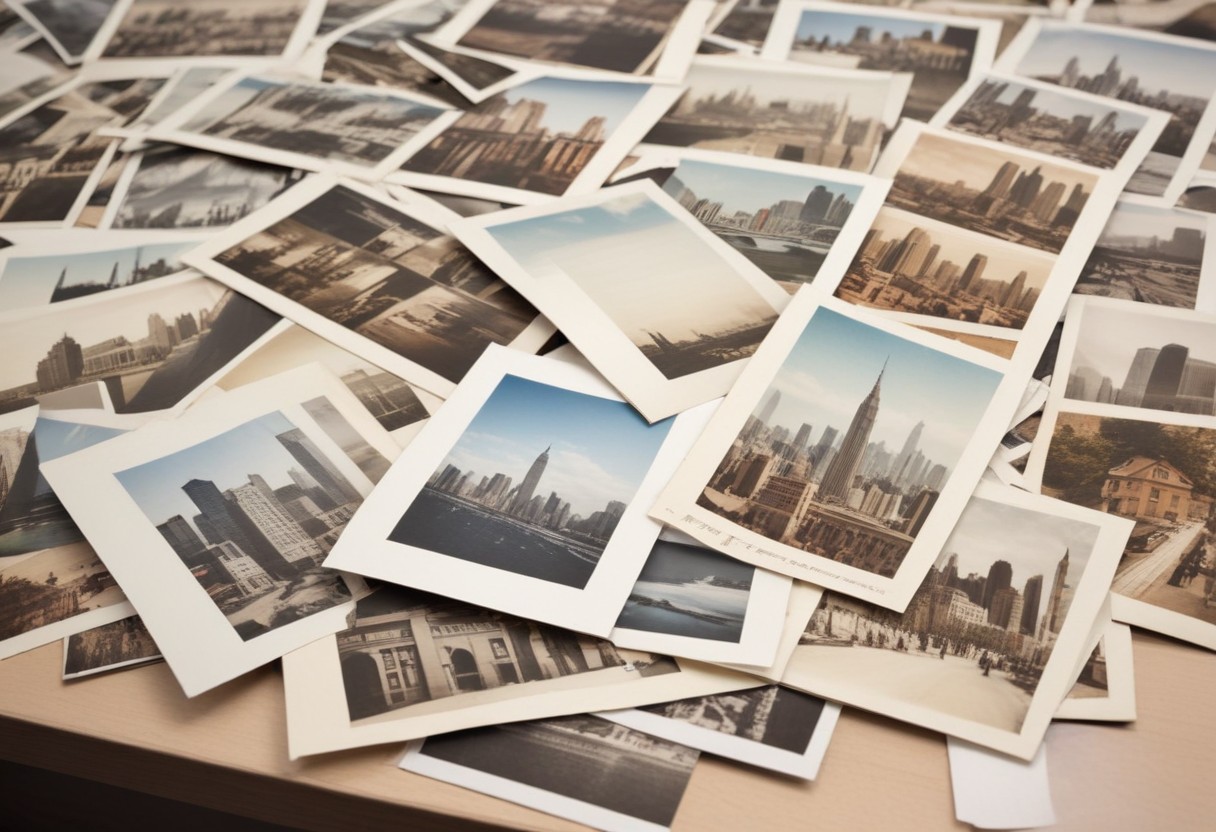Introduction
What is a postcard?
A postcard is a small, rectangular piece of thick paper or cardstock that can be written on and mailed without an envelope. Postcards typically feature an image or design on one side and a designated space for writing a message and addressing it on the other side.
Benefits of creating postcards in Word
Creating postcards in Microsoft Word offers several advantages, including:
- Customization: You have complete control over the design, layout, and content of your postcards, allowing you to create personalized and unique designs.
- Cost-effectiveness: Printing postcards at home or a local print shop can be more cost-effective than ordering premade postcards, especially for smaller quantities.
- Convenience: With Word’s user-friendly interface and built-in tools, you can design and print postcards without the need for specialized graphic design software.
- Versatility: Postcards can be used for a wide range of purposes, such as promotions, invitations, announcements, or personal correspondence.
Overview of the tutorial
In this tutorial, we’ll guide you through the process of creating beautiful and professional-looking postcards using Microsoft Word. We’ll cover setting up your postcard document, designing the front and back sides, preparing for printing, and exploring advanced techniques for personalization and efficiency.
Setting Up Your Postcard Document
Choosing the appropriate paper size
Standard postcard sizes
Most countries have standard postcard sizes that are recognized by postal services. In the United States, the most common postcard size is 4 x 6 inches (10.16 x 15.24 cm). Other standard sizes include 5 x 7 inches (12.7 x 17.78 cm) and 6 x 9 inches (15.24 x 22.86 cm).
Custom paper sizes
If you have specific size requirements or want to create non-standard postcards, Word allows you to set custom paper sizes. This can be useful for creating larger or smaller postcards, as well as different aspect ratios.
Setting up page orientation and margins
To ensure your postcard design fits correctly on the paper, you’ll need to adjust the page orientation (portrait or landscape) and set appropriate margins. Generally, for postcards, you’ll want to use the landscape orientation and set narrow margins to maximize the printable area.
Creating a new document or using a template
You can create your postcard document from scratch by opening a new Word document and adjusting the page settings. Alternatively, Word offers pre-designed postcard templates that you can use as a starting point, which can save time and provide layout inspiration.
Designing Your Postcard
Selecting a layout and background
Single-sided vs. double-sided postcards
Decide whether you want to create a single-sided postcard or a double-sided postcard. Single-sided postcards have an image or design on one side and a blank space for addressing on the other side. Double-sided postcards feature designs on both sides, allowing for more content and visual appeal.
Adding background images or colors
To make your postcard visually appealing, consider adding a background image or color. You can insert an image from a file or use Word’s shape tools to create colorful backgrounds. Alternatively, you can apply a solid color fill or gradient to the entire page or specific sections.
Adding text elements
Headings and body text
Most postcards include text elements such as headlines, subheadings, and body text. Use Word’s text formatting tools to create clear and visually appealing headings and adjust the font style, size, and color of your body text.
Font choices and formatting
When selecting fonts for your postcard, consider readability, legibility, and aesthetic appeal. Choose fonts that complement your design and ensure sufficient contrast between the text and background. Word offers a wide range of font styles and formatting options to help you achieve the desired look.
Text boxes and text wrapping
To position text elements precisely on your postcard, you can use Word’s text boxes. Text boxes allow you to move and resize text independently from the rest of the document. You can also use text wrapping options to make text flow around images or shapes.
Incorporating graphics and images
Inserting images from files
One of the key elements of a postcard is the main image or graphic. In Word, you can insert images from various file formats, such as JPEG, PNG, or GIF, by using the “Insert” menu or toolbar.
Online image sources
If you don’t have a suitable image file, you can search for and insert images from online sources like stock photo websites or image search engines. Be mindful of copyright and usage rights when using online images.
Sizing and positioning images
After inserting an image, you can resize and position it on your postcard layout using Word’s image editing tools. Crop, rotate, or flip the image as needed, and use alignment guides or text wrapping options to position it precisely.
Using Word’s built-in shape tools
Drawing shapes and lines
Word’s shape tools allow you to create various shapes, lines, and geometric elements that can enhance your postcard design. You can draw rectangles, circles, arrows, and more, adjusting their size, color, and outline as desired.
Applying to fill colors and outlines
To make your shapes more visually appealing, you can apply different fill colors, gradients, or patterns. You can also adjust the outline color, weight, and style of shapes and lines.
Grouping and aligning shapes
If your design includes multiple shapes or elements, you can group them together to move, resize, or align them as a single unit. Word’s alignment tools also help you position shapes and other objects precisely on your postcard layout.
Preparing for Printing
Setting up print settings
Paper size and orientation
Before printing your postcard, ensure that your print settings match the postcard size and orientation you’ve chosen. In Word’s print settings, select the appropriate paper size and landscape or portrait orientation.
Print quality and color options
Adjust the print quality settings based on your desired output quality. Higher quality settings will produce sharper images and text but may consume more ink or toner. Additionally, select the appropriate color mode (e.g., grayscale or color) for your postcard design.
Printer margins and scaling
Check your printer’s margins and adjust the scaling or fit settings in Word’s print options if necessary. This will ensure that your postcard design is printed within the printable area of the paper without cropping or distortion.
Printing a test copy
Previewing and proofing your postcard
Before printing a large quantity of postcards, it’s a good idea to print a test copy first. Use Word’s print preview feature to check how your postcard will look on the printed page. Carefully proofread the text, check the image quality, and ensure that all elements are positioned correctly.
Making necessary adjustments
If you notice any issues or areas for improvement during the proofing stage, make the necessary adjustments to your postcard design in Word. This may involve adjusting text formatting, repositioning elements, or tweaking the color or image quality settings.
Printing in bulk
Printing from Word directly
If you have access to a suitable printer and are printing a small quantity of postcards, you can print directly from Word. Set the desired number of copies and click the print button to start the print job.
Using online printing services
For larger print runs or if you don’t have access to a high-quality printer, you can consider using online printing services. These services allow you to upload your postcard design file and have professional-quality postcards printed and delivered to you.
Professional printing options
If you require even higher print quality or specialized finishes, you may want to explore professional printing options. Local print shops or commercial printing companies can produce postcards with advanced techniques like spot UV coating, embossing, or die-cutting, giving your postcards a truly professional and eye-catching look.
Advanced Techniques and Tips
Creating postcard templates
If you plan to create multiple postcard designs or need to maintain a consistent look across different postcards, consider creating reusable templates in Word. By saving your postcard layout as a template file, you can quickly create new postcards based on the same design, saving time and ensuring consistency.
Using Mail Merge for personalized postcards
Word’s mail merge feature allows you to create personalized postcards by merging data from an external data source (e.g., an Excel spreadsheet or database) into your postcard design. This can be useful for creating targeted marketing campaigns, event invitations, or personalized greetings.
Adding QR codes or barcodes
To enhance the functionality and interactivity of your postcards, you can consider adding QR codes or barcodes. These can be used to link to websites, provide additional information, or track postcard campaigns.
Designing double-sided postcards
If you want to create double-sided postcards, you’ll need to design two separate layouts – one for the front and one for the back. Word’s section breaks and page layout options can help you create and format the two sides independently.
When designing double-sided postcards, consider the following tips:
- Use a section break to create two separate sections in your Word document, one for the front and one for the back.
- Apply different background colors, images, or designs to each section to distinguish the front and back sides.
- Position text and other elements strategically, considering how the two sides will be oriented when printed.
- Use Word’s layout guides and alignment tools to ensure consistent positioning and spacing between the two sides.
- If you plan to print double-sided postcards at home, make sure your printer supports duplex printing (printing on both sides).
Postcard design inspiration and resources
If you need inspiration or resources for your postcard design, there are several places you can look:
- Online design galleries and portfolios: Websites like Behance, Dribble, and Pinterest offer a wealth of postcard design examples and ideas from professional designers and creatives.
- Stock image websites: Sites like Shutterstock, Adobe Stock, and Unsplash provide high-quality stock images and graphics that you can use in your postcard designs (be mindful of licensing and usage rights).
- Design blogs and tutorials: Many design blogs and tutorial websites share tips, techniques, and best practices for postcard design, layout, and typography.
- Word templates and add-ins: Microsoft’s built-in postcard templates and third-party Word add-ins can provide additional design options and tools for creating professional-looking postcards.
Don’t be afraid to experiment and combine different elements, colors, and styles to create a unique and eye-catching postcard design that aligns with your goals and branding.
Conclusion
Recap of key points
Throughout this tutorial, we’ve covered the following key points for creating postcards in Microsoft Word:
- Setting up your postcard document with the appropriate paper size, orientation, and margins.
- Designing the front and back sides of your postcard, including adding background images or colors, text elements, graphics, and shapes.
- Preparing your postcard design for printing by adjusting print settings, printing test copies, and exploring various printing options.
- Exploring advanced techniques like creating templates, using mail merge for personalization, adding QR codes or barcodes, and designing double-sided postcards.
- Finding design inspiration and resources to help you create visually appealing and effective postcard designs.
Final thoughts and encouragement
Creating postcards in Microsoft Word may seem daunting at first, but with the right guidance and a bit of practice, it can be a rewarding and cost-effective way to produce professional-looking marketing materials, announcements, or personal correspondence.
Don’t be afraid to experiment with different design elements, layouts, and printing options to find what works best for your needs. Remember, the key to creating effective postcards is striking a balance between visual appeal, clear messaging, and practicality.
With Word’s built-in tools and the techniques covered in this tutorial, you now know how to create stunning postcards that will grab attention and leave a lasting impression. So, unleash your creativity and start designing your next postcard masterpiece!







 No products in the cart.
No products in the cart.